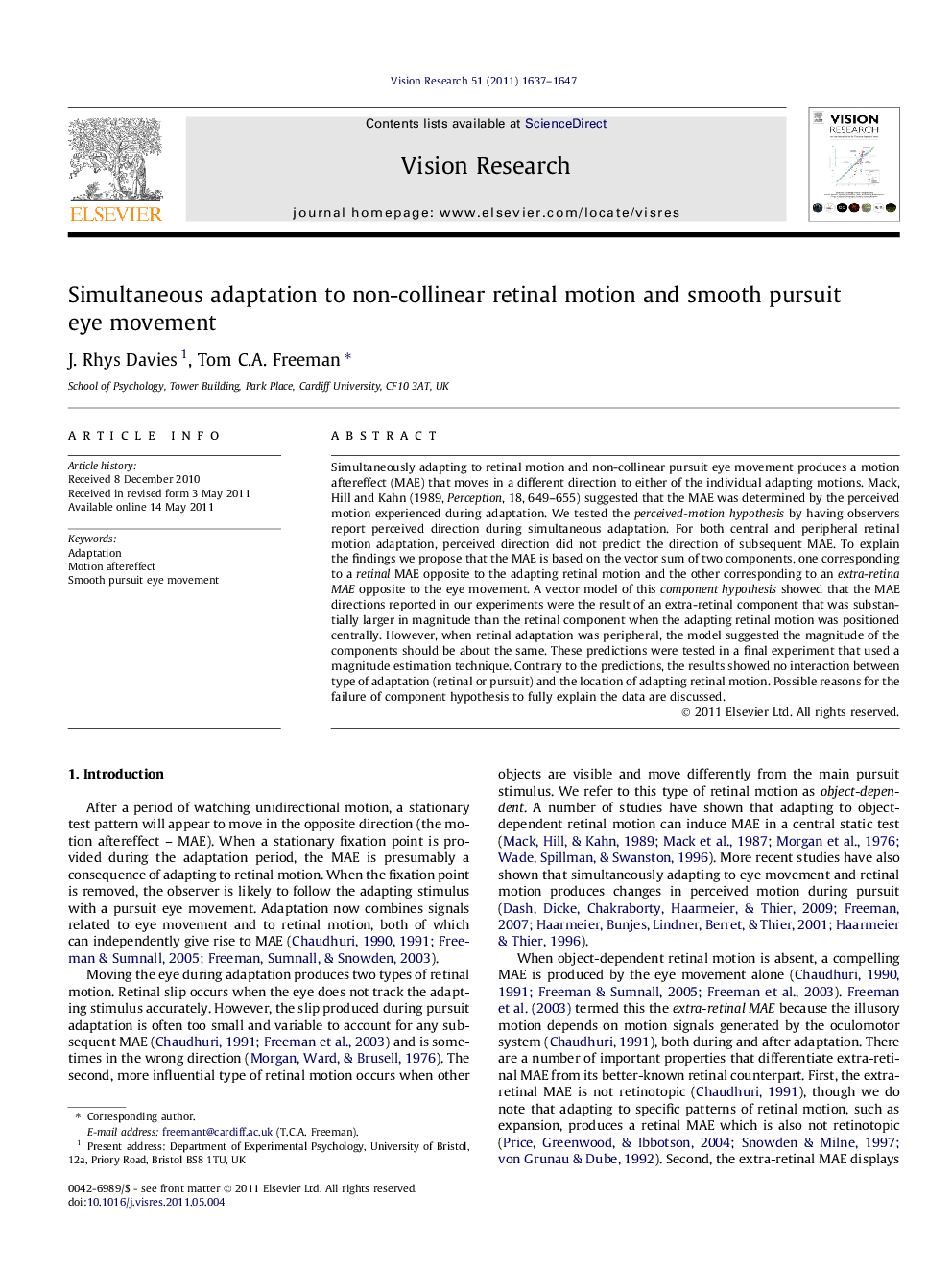| کد مقاله | کد نشریه | سال انتشار | مقاله انگلیسی | نسخه تمام متن |
|---|---|---|---|---|
| 4034190 | 1263435 | 2011 | 11 صفحه PDF | دانلود رایگان |

Simultaneously adapting to retinal motion and non-collinear pursuit eye movement produces a motion aftereffect (MAE) that moves in a different direction to either of the individual adapting motions. Mack, Hill and Kahn (1989, Perception, 18, 649–655) suggested that the MAE was determined by the perceived motion experienced during adaptation. We tested the perceived-motion hypothesis by having observers report perceived direction during simultaneous adaptation. For both central and peripheral retinal motion adaptation, perceived direction did not predict the direction of subsequent MAE. To explain the findings we propose that the MAE is based on the vector sum of two components, one corresponding to a retinal MAE opposite to the adapting retinal motion and the other corresponding to an extra-retina MAE opposite to the eye movement. A vector model of this component hypothesis showed that the MAE directions reported in our experiments were the result of an extra-retinal component that was substantially larger in magnitude than the retinal component when the adapting retinal motion was positioned centrally. However, when retinal adaptation was peripheral, the model suggested the magnitude of the components should be about the same. These predictions were tested in a final experiment that used a magnitude estimation technique. Contrary to the predictions, the results showed no interaction between type of adaptation (retinal or pursuit) and the location of adapting retinal motion. Possible reasons for the failure of component hypothesis to fully explain the data are discussed.
► Adapting to retinal motion and orthogonal eye pursuit yields a motion aftereffect (MAE) in a new direction.
► Experiments investigated the locus of the MAE (perceived motion or adaptation of inputs).
► Results did not support the perceived-motion hypothesis.
Journal: Vision Research - Volume 51, Issue 14, 15 July 2011, Pages 1637–1647